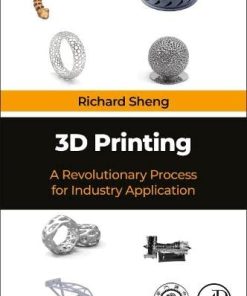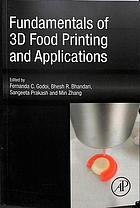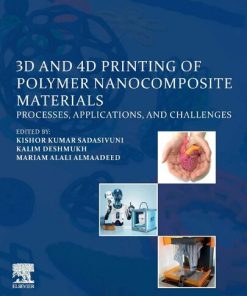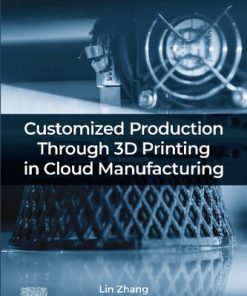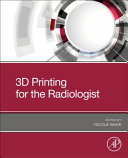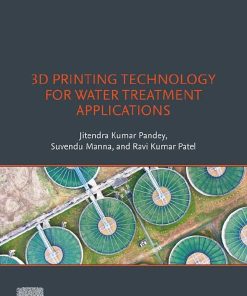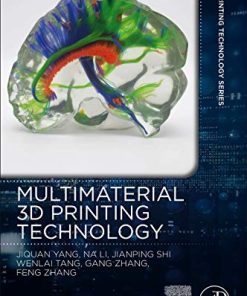(EBook PDF) 3D Printing A Revolutionary Process for Industry Applications 1st edition by Richard Sheng 0323995926 9780323995924 full chapters
$50.00 Original price was: $50.00.$25.00Current price is: $25.00.
3D Printing: A Revolutionary Process for Industry Applications 1st edition by Richard Sheng – Ebook PDF Instant Download/DeliveryISBN: 0323995926, 9780323995924
Full download 3D Printing: A Revolutionary Process for Industry Applications 1st edition after payment
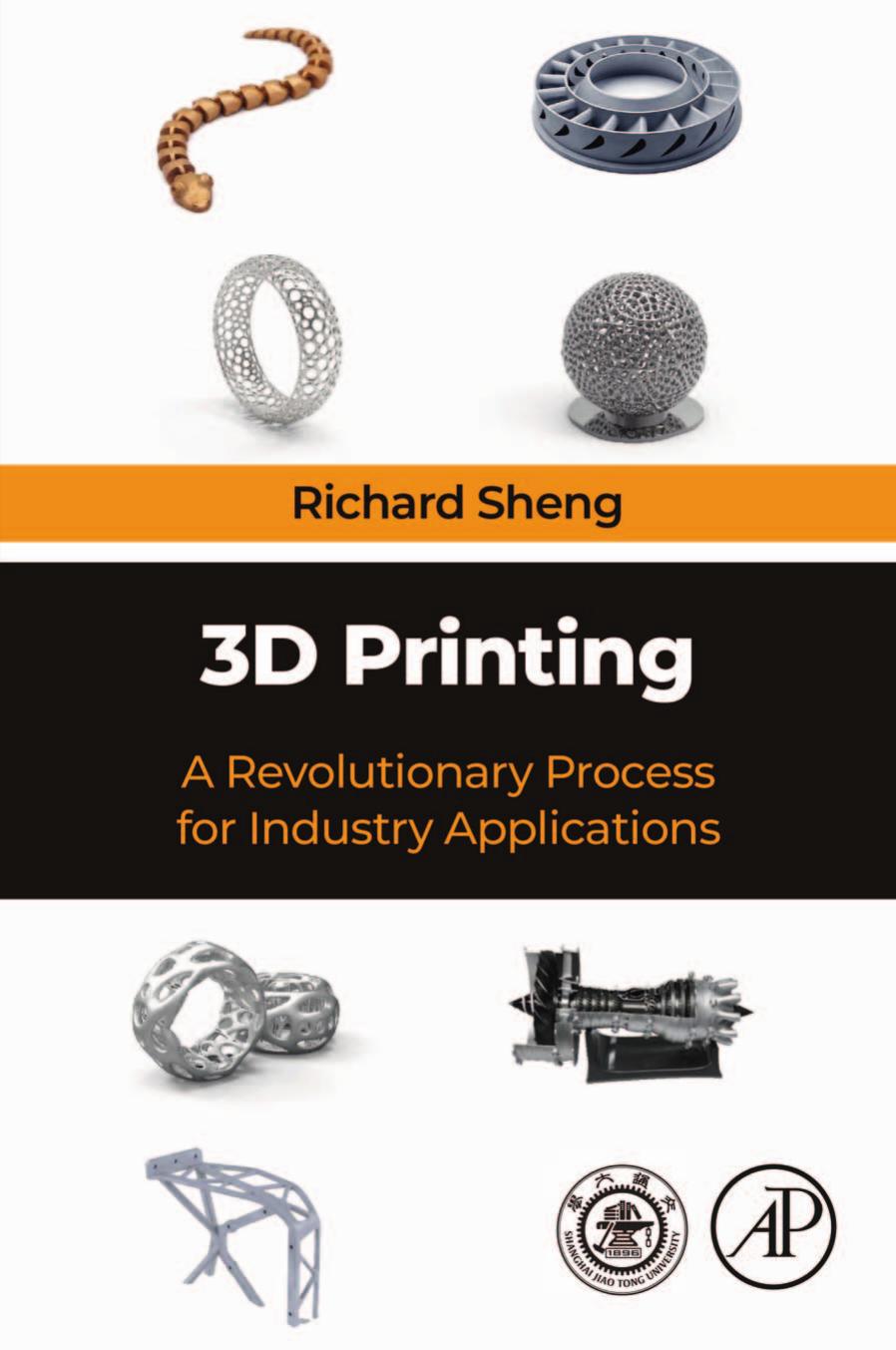
Product details:
ISBN-10 : 0323995926
ISBN-13 : 9780323995924
Author: Richard Sheng
3D Printing: A Revolutionary Process for Industry Applications examines how some companies have already adopted 3D printing, gives guidance on critical areas such as manufacturing supply, and traces the lifecycle of 3D printing as well as cost drivers and influences. The author leverages his experience in leading engineering firms to bring together an industry-by-industry guide to the potentials of 3D printing for large-scale manufacturing and engineering. The book provides all the skills and insights that a Chief Engineer would need to address complex manufacturing problems in the real-world using 3D printing technology.
3D Printing: A Revolutionary Process for Industry Applications 1st Table of contents:
Chapter 1. Introduction
Chapter 2. 3-D printing in the aerospace industry
2.1. What
2.2. When
2.3. Where
2.4. Key benefits of additive technologies for aerospace manufacturing
2.5. Why
2.6. How
2.7. Who
2.8. 3-D bioprinting in space
2.9. Construction of structures using 3-D printing
2.10. Conclusion
Chapter 3. 3-D printing of airplane parts
3.1. 3-D printing airplane parts
3.2. Advantages
3.3. Airplane parts
3.4. What
3.5. Where
3.6. Who
3.7. Why
3.8. When
3.9. How
Chapter 4. 3-D printing in the auto industry
4.1. When: since when has 3-D printing been used in the auto industry
4.2. How: how has 3-D printing impacted the racing world?
4.3. What: what are the benefits of 3-D materials and technologies?
4.4. Why: why should automotive companies use 3-D technology?
4.5. Where: where is 3-D printing being used?
4.6. Who: who is getting the benefit from 3-D technology?
Chapter 5. 3-D printing in the chemical industry
5.1. Introduction
5.2. What
5.3. When
5.4. Who
5.5. Where
5.6. How
Chapter 6. 3-D printing in the construction industry
6.1. What?
6.2. Where?
6.3. When?
6.4. Why?
6.5. How?
6.6. Who?
Chapter 7. 3-D printing in dental care
7.1. 3-D Introduction
7.2. How have dentists used 3-D printers?
7.3. Capabilities of 3-D printing in dentistry
7.4. Benefits of 3-D printing in dentistry
7.5. Use of 3-D printing technology in endodontics and periodontics
7.6. Advantages of 3-D printing technology in dentistry
7.7. Disadvantages of 3-D printing technology in dentistry
Chapter 8. 3-D printing in the drone industry
8.1. What
8.2. Why
8.3. Where
8.4. When
8.5. How
8.6. Who
8.7. The specificities of the aeronautics sector
8.8. Conclusion
Chapter 9. 3-D printing in education
9.1. What
9.2. Where
9.3. Who
9.4. When
9.5. Why
9.6. How
9.7. Conclusion
Chapter 10. 3-D printing in the fashion industry
10.1. Introduction
10.2. What
10.3. When
10.4. Who
10.5. Where
10.6. How
10.7. Apparel: 3-D printing clothes by Danit Peleg
10.8. Jacket without seams
10.9. Jewelry example: nervous system bracelet
10.10. Footwear
10.11. Watches
10.12. Ornaments
10.13. Recent 3-D fashions
10.14. Annie Foo, original 3-D printed shoes
10.15. Anouk Wipprecht and her Proximity Dress
10.16. Ganit Goldstein, custom fashion
10.17. Iris Van Herpen, between 3-D printing and nature
10.18. Met Gala 2019, the presence of 3-D technologies
10.19. Why: importance and future
Chapter 11. 3-D printing in the food industry
11.1. What
11.2. How
11.3. Why
11.4. Who
11.5. 3-D printing products reduce waste
11.6. Conclusion
Chapter 12. 3-D printing in the footwear industry
12.1. What
12.2. When
12.3. Where
12.4. Who
12.5. Why
12.6. How
Chapter 13. 3-D printing in healthcare
13.1. How
13.2. What
13.3. When
13.4. Where
13.5. How
13.6. Why is 3-D printing important in medicine?
13.7. Organ transplant
13.8. Surgical plan
13.9. Temperature and sterilization
13.10. Pointed equipment
13.11. Function
13.12. Porosity
13.13. Prosthetic structure
13.14. Medical intervention
13.15. Countless possibilities
13.16. Who
13.17. The case of Eric Moger
13.18. The case of Kaiba Gionfriddo
Chapter 14. 3-D printing in the hearing aid industry
14.1. Introduction
14.2. What
14.3. Where
14.4. Who
14.5. Why
14.6. When
14.7. How
14.8. Conclusion
Chapter 15. 3-D printing in the maritime industry
15.1. What
15.2. Prototypes, interiors, spare parts, tools
15.3. Large ship parts from industrial 3-D printers
15.4. When
15.5. Where
15.6. Who
15.7. Why
15.8. How
Chapter 16. 3-D printing in the mechanics industry
16.1. What
16.2. Why
16.3. Where
16.4. When
16.5. Who
16.6. How
Chapter 17. 3-D printing in the movie industry
17.1. Introduction
17.2. What
17.3. Why
17.4. When
17.5. Who
17.6. Where
17.7. How
17.8. Types of glasses for 3-D
17.9. Passive 3-D glasses (anaglyph lenses)
Chapter 18. 3-D printing in the tool and die industries
18.1. How
18.2. Who
18.3. Why
18.4. When
18.5. Where
18.6. Advantages of 3-D printing in tool manufacturing
18.7. What
Chapter 19. 3-D printing in the toy industry
19.1. What
19.2. When
19.3. Where
19.4. Who
19.5. How
19.6. 3-D printing still faces many technical challenges
Chapter 20. Summary and conclusion
20.1. Summary
20.2. Conclusion
People also search for 3D Printing: A Revolutionary Process for Industry Applications 1st:
3d printing process steps
3d printing process
3d printing cause and effect
revolutionary 3d printing
3d printing revolution
Tags:
3D Printing,Revolutionary Process,Industry Applications,Richard Sheng
You may also like…
Engineering - Engineering Technology
3D Printing: A Revolutionary Process for Industry Applications 1st Edition
Computers - Hardware
Engineering
Engineering
Engineering - Engineering Technology
Technique - Water Treatment




